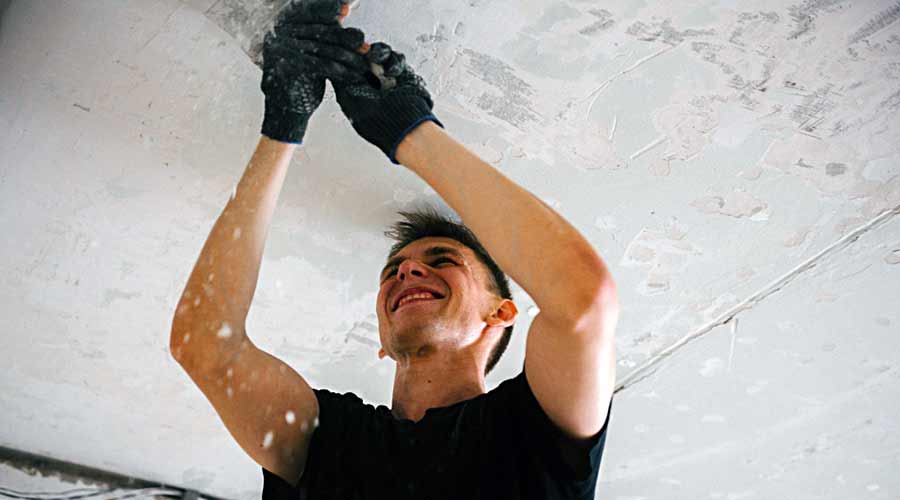Discovering a crack in your ceiling can be a source of worry for any resident. Whether it’s a small hairline fracture or a larger fissure, addressing it promptly is crucial to prevent further damage and maintain the structural integrity of your home. In this blog post, we’ll explore the common causes of ceiling cracks and provide step-by-step instructions on how to fix them effectively.
Understanding the Causes
Before diving into the repair process, it’s essential to understand what might have caused the crack in the first place. Ceiling cracks can result from various factors, including:
Settling:
Over time, the natural settling of a home can cause stress on the ceiling materials, leading to cracks.
Moisture:
Water leaks from plumbing, roofing, or high humidity levels can weaken ceiling materials and cause them to crack.
Temperature Changes:
Fluctuations in temperature can cause materials to expand and contract, leading to stress and eventual cracking.
Structural Issues:
Issues with the structural integrity of the building, such as foundation problems or inadequate support, can also contribute to ceiling cracks.
Repairing the Crack
Now that you understand the potential causes, let’s delve into the steps to repair a crack in your ceiling:
Prepare the Area:
Begin by clearing the area around the crack of any debris or loose materials. Use a vacuum cleaner or a brush to ensure the surface is clean and free of dust.
Assess the Damage:
Determine the extent of the crack and whether it requires simple cosmetic repair or more extensive structural reinforcement.
Apply Joint Compound:
For small hairline cracks, apply a thin layer of joint compound using a putty knife. Smooth the compound over the crack and feather out the edges to blend with the surrounding surface.
Use Drywall Tape:
For larger cracks, apply self-adhesive drywall tape over the crack to provide additional reinforcement. Press the tape firmly into place, ensuring it adheres securely to the ceiling.
Apply Additional Layers:
If necessary, apply additional layers of joint compound over the drywall tape, feathering out each layer to create a seamless finish. Allow each layer to dry completely before applying the next.
Sand and Smooth:
Once the joint compound is dry, use fine-grit sandpaper to smooth the surface and remove any rough edges. Wipe away any dust with a damp cloth.
Prime and Paint:
Finally, prime the repaired area to ensure proper adhesion of the paint, then paint the ceiling to match the surrounding surface. Use a high-quality paintbrush or roller for a professional finish.
Instruct a Professional:
While the above are the steps in minor cracks, when you feel that its not a minor or that you are doubtful, instruct a professional or contact us
Preventing Future Cracks
While repairing existing cracks is essential, taking steps to prevent future cracks is equally important. Here are some tips to help prevent ceiling cracks:
- Ensure proper ventilation in your home to prevent moisture buildup
- Address any plumbing leaks or roof issues promptly to prevent water damage
- Monitor changes in temperature and humidity levels and take steps to regulate them as needed
- Regularly inspect your home for signs of settling or structural issues and address them promptly
By following these guidelines and taking proactive measures, you can effectively repair a crack in your ceiling and prevent future issues. Remember, if you’re unsure about the extent of the damage or lack the necessary skills to tackle the repair, it’s always best to consult with a professional contractor or handyman, look further you can Contact Us. With the right approach, you can restore your ceiling to its former glory and enjoy peace of mind knowing your home is safe and sound.

